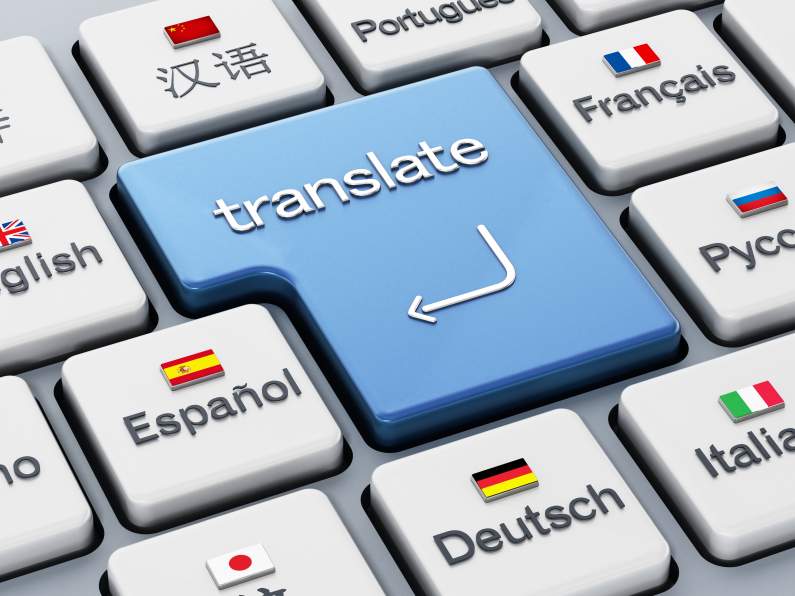In today’s globalized world, the ability to effectively communicate across languages has become a crucial aspect of business success. Whether you’re expanding your operations into new international markets, engaging with multilingual clients, or simply looking to reach a wider audience, professional translation services play a vital role in bridging the language gap.
Accurate and culturally-appropriate translations can open up new opportunities, foster stronger relationships, and ensure that your message is conveyed with clarity and precision. However, navigating the world of professional translation services can be a daunting task, as you must balance the need for high-quality results with the constraints of your budget.
In this comprehensive guide, we’ll explore the various types of professional translation services, delve into the nuances of balancing cost and quality, and provide you with practical tips to help you find the right translation partner for your specific needs.
Types of Professional Translation Services
When it comes to professional translation services, there are several options to consider, each with its own unique advantages and considerations:
- Human Translation:
- Performed by experienced, native-speaking translators
- Ensures high-quality, contextual translations
- Typically more expensive than machine translation
- Requires more time for completion
- Machine Translation:
- Utilizes advanced artificial intelligence and natural language processing
- Offers fast and cost-effective translations
- May not capture nuances or cultural context as effectively as human translation
- Requires post-editing to ensure accuracy
- Hybrid Translation:
- Combines the strengths of human and machine translation
- Leverages machine translation as a starting point
- Human translators then review and refine the output
- Offers a balance between cost and quality
- Localization Services:
- Adapts content to specific cultural and linguistic requirements
- Includes translation, as well as layout, design, and multimedia adjustments
- Ensures your message resonates with the target audience
- Typically more comprehensive and expensive than standard translation
When selecting the right type of professional translation service, consider the complexity of your content, the level of accuracy required, and your budget constraints. Each approach has its own merits, and the optimal solution may involve a combination of these services.
Balancing Cost and Quality in Professional Translation Services
One of the primary challenges in choosing professional translation services is finding the right balance between cost and quality. While it’s tempting to opt for the most affordable option, sacrificing quality can have serious consequences, such as miscommunications, damage to your brand reputation, and missed business opportunities.
On the other hand, high-quality translation services can come with a significant price tag, which may not fit within your budget. The key is to strike a balance that meets your needs without breaking the bank.
To help you navigate this delicate balance, consider the following factors:
- Content Complexity:
- More complex or specialized content, such as legal, medical, or technical documents, may require the expertise of highly-skilled translators, which can increase the cost.
- Simple, straightforward content may be better suited for more cost-effective machine translation or hybrid solutions.
- Turnaround Time:
- Expedited translation services typically come with a higher price tag, as they require translators to work on a tight deadline.
- If your timeline is more flexible, you may be able to find more affordable options.
- Language Combination:
- Translations between common language pairs (e.g., English to Spanish) are generally more affordable than less common language combinations.
- Rare or minority languages may require specialized translators, which can increase the cost.
- Volume of Content:
- Larger translation projects often benefit from economies of scale, allowing you to negotiate better rates.
- Smaller, one-off translation tasks may be subject to higher per-word or per-hour rates.
- Industry Expertise:
- Translators with specialized knowledge in your industry or domain may charge higher rates, but can provide more accurate and relevant translations.
- More generalist translation services may be more affordable, but may lack the deep understanding of your specific needs.
By carefully considering these factors, you can strike a balance between cost and quality that aligns with your project requirements and budget constraints.
Tips for Finding Affordable Professional Translation Services
While quality should be the primary consideration when choosing professional translation services, it’s also important to keep an eye on your budget. Here are some tips to help you find affordable options without sacrificing the level of service:
- Leverage Technology:
- Explore machine translation or hybrid solutions that combine machine and human translation, as these can be more cost-effective than traditional human translation.
- Utilize translation management software and platforms, which can streamline the translation process and provide access to a wider pool of translators.
- Negotiate Rates:
- Engage with multiple translation providers and compare their rates, discounts, and pricing structures.
- Consider factors like volume, language combinations, and turnaround time when negotiating.
- Ask about any available discounts or bulk pricing options.
- Prioritize Efficiency:
- Provide translators with clear, well-organized source materials to minimize the time required for translation.
- Leverage translation memory and glossaries to reduce the effort needed for repeat content.
- Establish a clear project scope and timeline to avoid unexpected costs.
- Leverage Community Resources:
- Explore crowdsourcing platforms or online communities that connect you with freelance translators, who may offer more affordable rates than traditional agencies.
- Consider partnering with universities or language schools, which may have translation services at lower costs.
- Optimize Your Content:
- Review your content for opportunities to simplify language, reduce complexity, or streamline messaging, as this can help reduce translation costs.
- Ensure that your source content is of high quality and free of errors, as this can minimize the need for revisions or additional work.
By applying these strategies, you can find professional translation services that meet your quality standards while staying within your budget constraints.
The Role of Technology in Professional Translation Services
The landscape of professional translation services has been significantly shaped by the rapid advancements in technology. From machine translation to translation management software, these technological innovations have transformed the way we approach language barriers.
- Machine Translation:
- Machine translation engines, powered by artificial intelligence and natural language processing, have become increasingly sophisticated, offering more accurate and contextual translations.
- While machine translation may not yet match the nuance and cultural understanding of human translators, it can provide a cost-effective starting point for many translation projects.
- Translation Management Software:
- These platforms streamline the translation process, providing features such as translation memory, terminology management, and project workflow automation.
- By leveraging these tools, translation providers can improve efficiency, reduce turnaround times, and offer more competitive pricing.
- Collaborative Translation Platforms:
- Online platforms that connect businesses with a global network of professional translators, allowing for more flexible and cost-effective access to translation services.
- These platforms often offer features like translation quality monitoring, feedback mechanisms, and secure file sharing.
- Multilingual Content Management Systems:
- Specialized software solutions that enable the management and translation of content across multiple languages, often with built-in translation workflows and integration with machine translation engines.
- These systems can help organizations scale their multilingual content efforts more efficiently and cost-effectively.
- Augmented Reality and Machine Learning:
- Emerging technologies like augmented reality and machine learning are being integrated into translation services, further enhancing the accuracy and efficiency of the translation process.
- For example, AR-powered translation apps can provide real-time, on-the-go translations, while machine learning algorithms can improve translation quality over time.
As you explore professional translation services, be sure to consider how these technological advancements can be leveraged to optimize your translation efforts and achieve the right balance between cost and quality.
Conclusion
Navigating the world of professional translation services can be a complex and challenging task, but by understanding the various options available and the factors that influence cost and quality, you can make informed decisions that align with your specific needs.
Whether you choose human translation, machine translation, or a hybrid approach, the key is to carefully evaluate your content requirements, timeline, and budget constraints to find the right balance. By leveraging technology, negotiating effectively, and optimizing your content, you can access high-quality translation services without breaking the bank.


